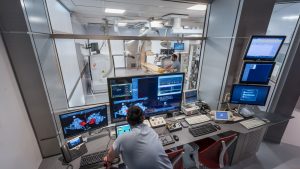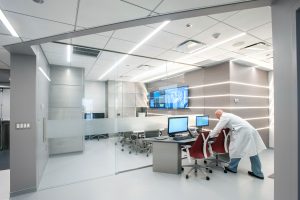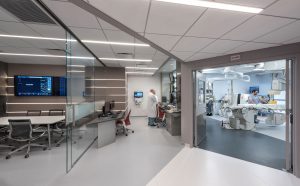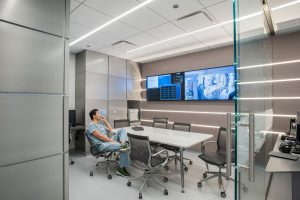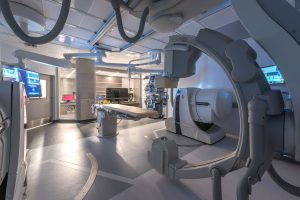Advances in field of cardiac electrophysiology have led to an increasing demand for fully integrated labs inside hospitals to provide a complete array of diagnostic technological platforms within a single operating suite that serves in- and out-patient needs. RADA Architects led the transformation of an outdated, decommissioned procedure room and adjacent rooms at Bernard Mitchell Hospital on the University of Chicago Medicine campus into a state-of-the-art Arrhythmia Technology Suite (ATS), equipped with three mapping systems, robotic magnetic navigation technology, and a glass-enclosed viewing room.
ATS Medical Director Dr. Roderick Tung envisioned a space that looked the part of the “lab of the future” from a science fiction movie set, housing not only today’s latest electrophysiological technology, but also providing an inspiring atmosphere in which to conduct the clinical research that defines and refines the tools of tomorrow.
This presented a unique challenge to the architect, largely because the futuristic architecture imagined in science fiction movies – think Transcendence or Gattaca – often frames sinister intentions, while the purpose of the ATS Lab is to preserve health and save lives. As a result, the design provides no cloning stations or suspended animation pods, but does feature the recognizable use of glass and light to simulate daylight, elicit hope, and illuminate and inspire dreams of the future. Visual enhancements include glowing 3form lightboxes and horizontal-reveal LED light fixtures that create dynamic wall accents. Floor-to-ceiling leaded glass observation windows allow transparency and visual connection throughout the suite, and high-end finishes capture the spirit of the doctor’s cinematic vision.

